Distortion comparison: a 7" hi-fi woofer
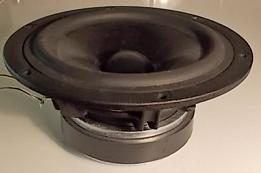 In the following are some comparisons of distortion (current drive vs. voltage drive) taken from quite a typical 7-inch hi-fi mid-woofer (Vifa PL18WO09-04) that has a conventional ferrite magnet motor structure. The driver was mounted in a 17-litre sealed cabinet filled with damping material.
In the following are some comparisons of distortion (current drive vs. voltage drive) taken from quite a typical 7-inch hi-fi mid-woofer (Vifa PL18WO09-04) that has a conventional ferrite magnet motor structure. The driver was mounted in a 17-litre sealed cabinet filled with damping material.
Below is an amplitude spectrum plot of the modulation distortion that occurs in the V/I conversion of the driver (that is, the distortion in voice coil current when the driver is fed by a voltage signal). The test signal consists of two sine waves at frequencies 300 Hz (f1) and 2.5 kHz (f2) with voltage proportion 5:1. (Due to impedance variation, the proportion of currents differs from this a little.) The signal level was set to give an RMS voltage of 2 V that yields 1 W power into 4 Ω.
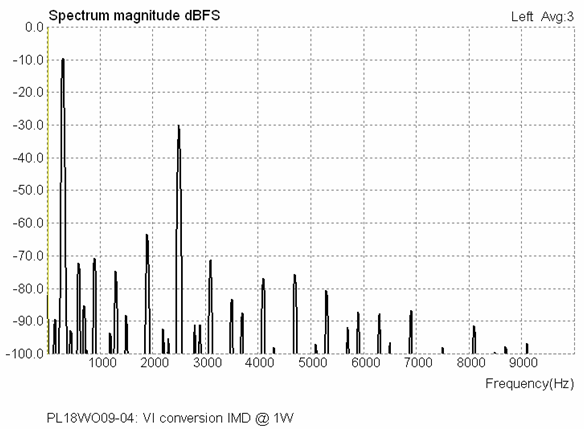
It is seen that the 2500 Hz tone current becomes quite badly distorted in the presence of the 300 Hz tone. The modulation product f2-2f1 (1900 Hz) alone is 2.2% (-33 dB) in magnitude with respect to the original 2500 Hz tone. In addition to f2-4f1 (1300 Hz) and f2+2f1 (3100 Hz), the products 2f2-f1 (4700 Hz) and 2f2-3f1 (4100 Hz) are also very significant.
The corresponding acoustic distortion spectrum on voltage drive is seen below. The modulation components match very well to the current distortion above, indicating that the V/I conversion indeed is the principal source of the distortions.
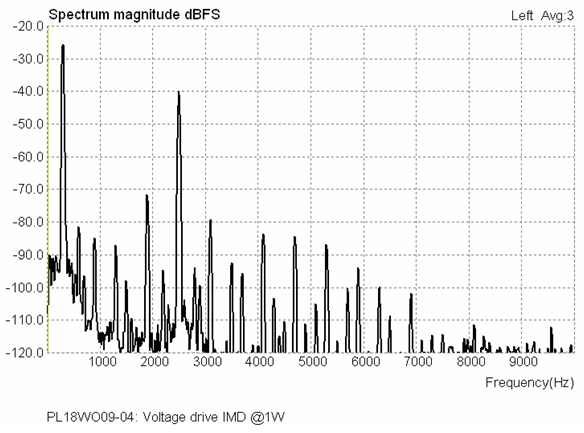
The worst of these components are the f2-2f1 (1900 Hz) and f2+2f1 (3100 Hz) while the components introduced around 2f2 (5000 Hz) are also rather strong. By calculating the power sum of all the significant components (excluding harmonics), the total modulation distortion of the original 2.5 kHz tone is a staggering 3.1%.
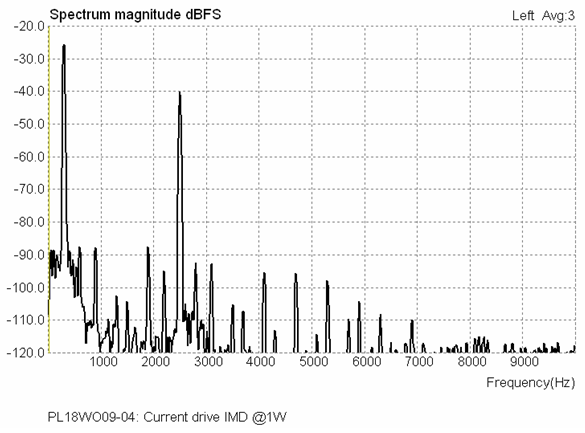
The corresponding result on current-drive is seen above. The six highest modulation products are all reduced by at least 11 dB and the highest one at 1900 Hz even by 16 dB. By calculating the sum as before, we get as the total modulation distortion 0.64%, that is, an improvement by a factor of 4.8.
The same test was also performed with halved signal frequencies relative to the above, that is, 150 Hz and 1250 Hz. The corresponding acoustic results for voltage drive and current-drive are shown below.
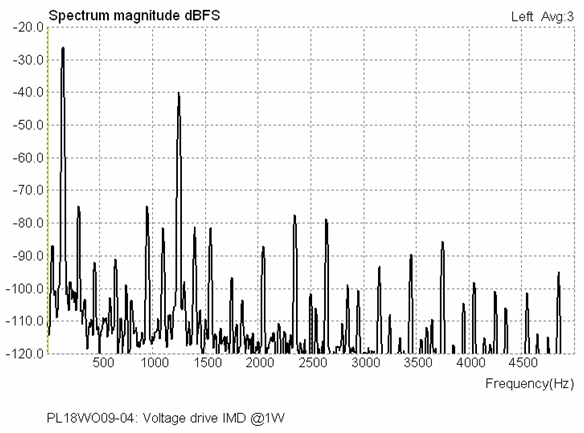
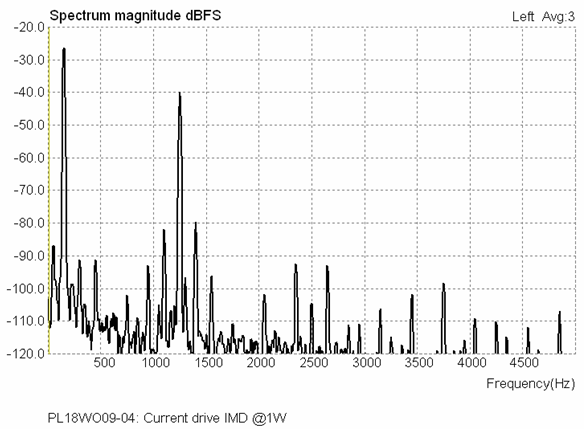
The distortion products nearest to the original 1250 Hz tone ( f2-f1 and f2+f1) are obviously due to some mechanical problem and thus not cured by current-drive. All the other significant products instead are reduced by more than 12 dB, and the one at f2-2f1 (950 Hz) even by 18 dB.
By taking the power sum of the significant modulation components like before (The peak at 3750 Hz is the 3rd harmonic and therefore excluded here.), we get 3.0% for voltage drive and 1.4% for current-drive; thus the improvement factor so calculated is 2.1. The real sonic benefit is, however, greater than that since the components not reduced ( f2-f1 and f2+f1) are also those closest to the original frequency and therefore more in its masking shadow than the other components.
The net results do not change much if we use 4:1 as the voltage proportion, instead of 5:1. Then, the components around the f2 tone decrease a couple of decibels relative to it, but the components around 2f2 respectively increase by a similar amount.
Below are the results on 2nd and 3rd harmonic distortions (H2 and H3 respectively) from the same driver, measured likewise at 2 V level. The test has been carried out point by point, taking care that the signal level remained the same (within 0.1 dB) in both modes. The reddish line denotes voltage drive and the blue current-drive.
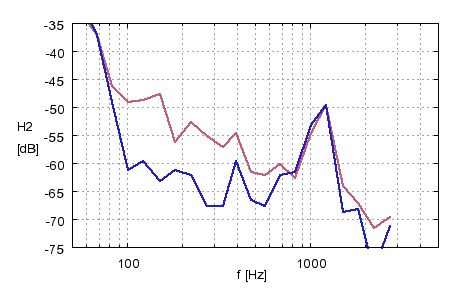
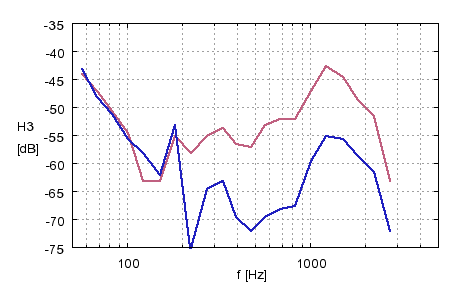
At low mids and high bass, the 2nd harmonic decreases on current-drive remarkably though the level is not very high on voltage drive either. The prominence due to mechanical reasons at 1200 Hz is quite typical and obviously related to the surround (surround dip).
The main improvement is reaped, however, in the 3rd harmonic that drops at frequencies above 200 Hz on current-drive by 10-15 dB. Especially in the 1 kHz region, the improvement is really crucial, for in this area the 3rd harmonic is still audible (i.e. not masked by the fundamental) even down to -60 dB level.
The V/I conversion is thus the most significant source of 3rd harmonic distortion in dynamic drivers and a very significant one also in the 2nd.

